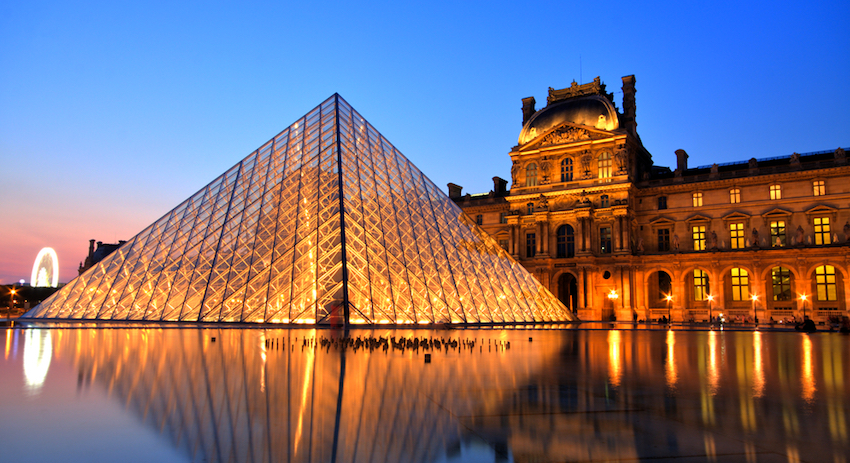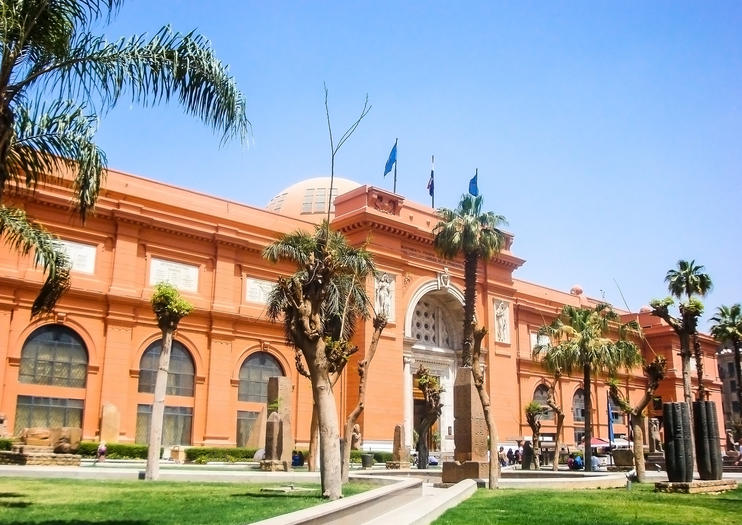The World’s Top Three Fascinating Museums
Museums are transcending art edifices that are regarded as mirrors by which we see how great a nation is. Visiting museums widens your scope of knowledge and allows you to explore new cultures, histories, and exhibitions. By definition, museums are momentous houses displaying visual arts – works that are primarily pictorial by nature, such as ceramics, drawing, painting, sculpture, photography, and architecture. In this article, we will accompany you on a visit to the most admired museums around the world. So, if you think the experience of visiting a museum is boring, it is time to have second thoughts about it.
The Louvre – France
The Louvre is the world’s largest art museum located in Paris, France. The Louvre Palace, which houses the museum, was built as a fortress by Philip II in the 12th century to protect the city from English soldiers. The museum opened in 1793 with an exhibition of 537 paintings, most of which were royal properties and confiscated church properties. The collection is divided into eight departments: Egyptian Antiquities, Eastern Antiquities, Greek and Roman Antiquities, Islamic Art, Sculpture, Decorative Arts, paintings, and drawings. The museum is distinguished by its glass pyramid of the main courtyard, designed by L. M. Pei. This structure which reaches a height of 71 ft, was constructed entirely with glass segments and metal poles. It consists of 603 rhombus-shaped and 70 triangular glass segments surrounded by three small pyramids. The large pyramid serves as the main entrance to the Louvre Museum. Completed in 1989, it has become a landmark of the city of Paris.
The Louvre is marked by its renowned Egyptian department, which comprises over 50,000 pieces. The department is divided into around 30 rooms for the collection. It incorporates numerous Egyptian mummies, such as A Mummy of a Man and A Mummy of a Woman with Portrait. It includes also the statue head of Sanusret III and the Statue of Osiris. In addition, The Louvre comprises multifarious Assyrian statues. According to the Louvre website, the number of Assyrian statues is estimably 100 statues. This includes the divine triad, a religious statue that was discovered at the crossroads of Syria. These gods are represented in Roman military dress, a distinctive feature of Palmyrene religious iconography. A funerary Relief of a Couple is also one of the famous artefacts in The Louvre. Noteworthy, funerary reliefs of married couples were common in Roman funerary art.
In addition to its awe-inspiring statues and mummies, The Louvre encompasses abundant paintings. As a manifestation, it displays The Mona Lisa, a half-length portrait painting by Leonardo da Vinci that has been described as “the best known, the most visited, the most written about, the most sung about, the most parodied work of art in the world,” as John Lichfield remarks. The Wedding at CANA, a biblical painting displaying one of the famous miracles of Jesus Christ is also found at The Louvre. The Coronation of Napoleon is another painting by Louis David, the official painter of Napoleon, depicting the coronation of Napoleon I at Notre-Dame de Paris. In addition, according to The Independent, there are over 38,000 oil paintings in the Louvre.
The British Museum – England
The British Museum is located in the Bloomsbury area of London, in the United Kingdom. It is a momentous public institution for human history, art, and culture. It was established in 1753, particularly based on the collections of the Irish scientist Sir Hans Sloane. It is sponsored by the Department for Digital, Culture, Media, and Sport through a three-year funding agreement. It encompasses ten departments: Ancient Egypt, Greece and Rome, The Middle East, Britain, Asia, Africa, Medals, scientific research, and archives. The British Museum is famous for its eminent Queen Elizabeth Great Court, designed by Warman Foster. Thanks to Queen Elizabeth Court, the Museum’s inner courtyard has morphed into the largest covered public square in Europe. The courtyard spans over a two-acre space enclosed by a spectacular glass roof with the world-famous Reading Room at its centre, which brings the mind to the glass pyramid of The Louvre. The court was opened in 2000, with total costs of 100 million E.

Echoing the Louvre, The British Museum houses a captivating Egyptian Department. The Department of Egypt was constructed in 1836, including numerous Egyptian monuments. When British troops defeated the French, under the Capitulation of Alexandria in 1801, the original Rosetta stone came into British possession and was transported to London. It has been on public display at the British Museum almost continuously since 1802 and is the most-visited masterpiece there. The British Museum encompasses many Egyptian sculptures, such as the Sculpture of Ramses II. It also has A Mummy of a Youth with a Portrait of the Deceased and A Mummy of a Cat.
The Guardian indicates that the British Museum exhibits about 20 Assyrian sculpture, including the Statue of Idrimi – a Syrian king. This statue is distinguished by its carved magnesite with glass eyes, set into the eye-sockets. Moreover, the museum houses The Neo-Assyrian King Ashurnasirpal II Statue. In addition, the museum includes multifarious timeless paintings, such as Jacob’s Ladder and Crucifix, two world-famed biblical painting. Another renowned painting in The British Museum is Laterna Magica, which is an early type of image projector developed in the 17th century. Additionally, The British Museum site reveals that there are more than 30,000 oil paintings in the museum.
The Egyptian Museum – Egypt
The Egyptian Museum is the oldest and largest archaeological museum in the Middle East. It boasts a wide spectrum of Pharaonic antiquities, spanning from the Predynastic Period to the Greco-Roman Era. It ranks in the most prestigious museums of the world as it enshrines an abundance of masterpieces that expand to more than 100,000 ancient artefacts, varying between mummies, coffins, stones, ancient belongings, and even food items that used to be buried with the kings to use in the afterlife. The museum was previously erected in 1835 near the Ezbekieh Garden and later moved to the Cairo Citadel. In 1902, the museum was moved for the last time to be inaugurated by Khedive Abbas Helmy II in Tahrir Square. The Egyptian Museum comprises the landmark statues of the great kings Khufu, Khafre, and Menkaure, who built the great Egyptian pyramids. Moreover, the museum houses pristine mummies of Yuya and Thuya, Psusennes I, and the Treasures of Tanis, and the Narmer Palette who contributed to the union of Upper and Lower Egypt.
Egypt’s Grand Egyptian Museum (GEM) has recently become the talk-of-the-town event in Egypt. It is expected to bring in 5 million visitors yearly. It is also designed to display the most up-to-the-minute technologies, such as virtual reality. The museum will be established outside central Cairo to preside over the Giza Plateau, in the western desert. It is designed to peek out among the graceful Giza Pyramids and to reflect the grandeur of ancient Egypt. There are sculpture gardens at the entrance of the museum park, boasting the gigantic statue of Ramses II, welcoming the museum’s visitors upon entry. Eltayeb Abbas, the new museum’s head of archaeology, depicts the significance of such a great edifice, saying: “The main objective of the GEM is to embrace the whole world and showcase the best of our ancient civilization.”

